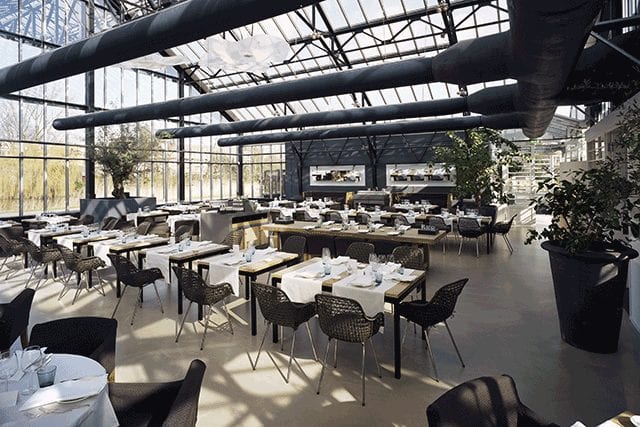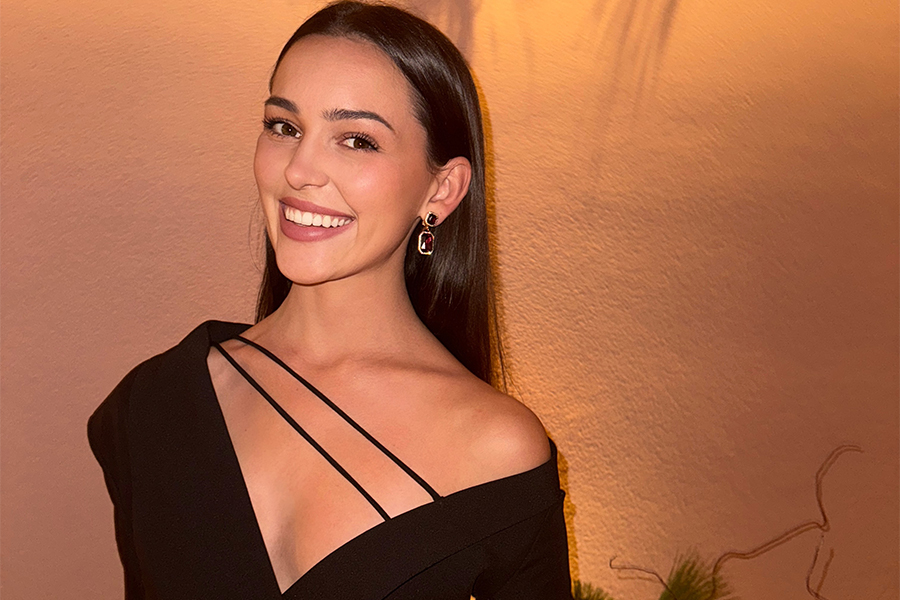Whether he’s designing for Porsche or Land Rover or working on his many product lines or projects, Piet Boon has become synonymous with timeless elegance thanks to his distinct Scandinavian aesthetic that celebrates clean lines and natural light, often blending the indoors with the outdoors. “It is definitely exciting to design for different industries because it encourages you to push boundaries and venture out into the unknown,” the prolific Dutch designer says. “We learn a lot with every new design and every new product.”
Look no further than the Jane in Antwerp, Belgium. The fine dining restaurant, located in the chapel of a former military hospital, is at once edgy and contemporary. And with a Park Hyatt in Hanoi, Vietnam on the boards, Boon will soon translate the country’s lush landscape into his signature modern minimalism. Along with three restaurants in the Netherlands and another high-end hotel in Seoul, it’s perhaps his three residential projects in New York that have established the Amsterdam-based designer as a global powerhouse, where his signature style is redefining urban life in the city, setting the bar on luxury living.
Here, Boon discusses the best decision he has ever made, achieving quiet sophistication, and what’s still on his design bucket list.
Before you opened Studio Piet Boon 30 years ago, you started your career as a builder. What made you transition to designer?
It was this experience in the field of construction and my frustration with the poor design of others that led me to discover that I needed to take full ownership of the design. That way I could combine my knowledge of materials, building process insight, and passion for beautiful details to give life to my design philosophy of balancing functionality, aesthetics, and individuality. So I decided to stop being a contractor and start my own design firm.
In 1986, passionate creative Karin Meyn joined the studio as business partner and creative director of interior and styling. Over the years the studio has grown from a small practice specializing in private residences into a global operating design company with a portfolio of private, corporate, and commercial clients. Switching careers was one of the best decisions I ever made.
How did you get involved in product design?
[It] evolved very naturally within our studio. We would often search for something specific in an aesthetical or functional sense for our projects and if we couldn’t find what we were looking for, we would make it ourselves. One thing led to another and before we knew it we weren’t making one-off furniture pieces anymore, we were launching entire collections at Milan Design Week in 2005.
Our latest furniture collection was inspired by our own Klink side table. Building on its artisanal shape, we added the Ella seating series, Olle dining and bistro table, Ode coffee table, and Luna lamp to our furniture line. Apart from belonging to the same Piet Boon family, our products also have a common denominator in terms of subdued color palette, generous proportions, high-quality materials, and timeless design, making them easy to incorporate in any interior.
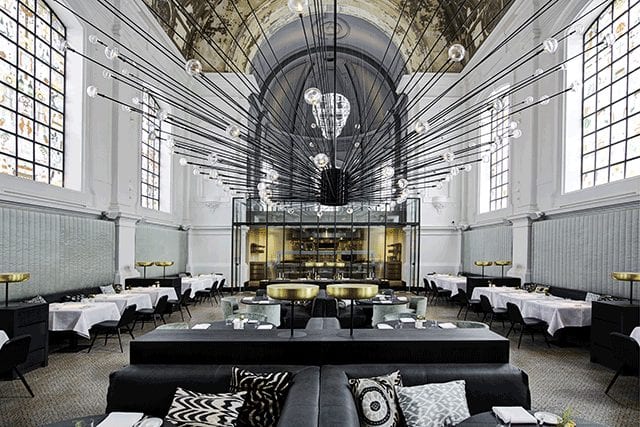
A sculptural chandelier made of handblown crystals is the centerpiece in the Jane in Antwerp where a contemporary edge is achieved by preserving the former military hospital’s original elements like peeling paint and pottery floor tiles.
Describe your design aesthetic.
Our work is, among other things, known and recognizable for our subdued color palette, high level of detailing, how we line spaces (strong axis with sight lines), and our use and view on dimension and shapes. We find it important that people experience the same effortless atmosphere and signature throughout the design.
Is there something you haven’t designed that is still on your bucket list?
I have actually been able to tick quite a few items off our list. There are so many exciting things that we have done and are currently working on: a 5-Star-plus hotel in the city center of Amsterdam; a residential development in Kuala Lumpur; private homes in the Netherlands, the Caribbean, and London. Only recently we revealed the Porsche Alex, the result of a special collaboration between Studio Piet Boon and Porsche. Naturally, we look forward to everything that is yet to come, though if we would have to name one thing in particular, it would be a great honor if we were tasked with designing the private home of Dutch King Willem-Alexander and Queen Máxima.
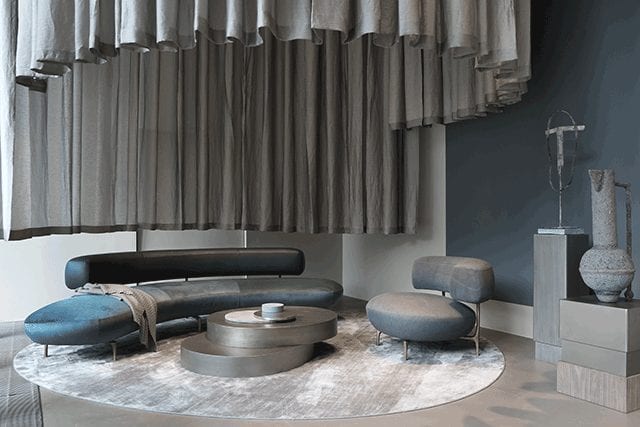
Debuting during this year’s Milan Design Week, Boon’s latest collection is defined by curvaceous lines in sofas, seating, and side tables.
You are working on three New York residential buildings: Huys, 101 Wall Street, and Oosten (in Williamsburg, Brooklyn). How are you incorporating your Dutch sensibilities into these properties?
In the attention that is paid to ensure a high-quality, timeless, effortless living environment, use of natural light, and strong axis lines. That said, all three residential projects boast comfortable, sizeable, yet intimate living spaces that follow a routing according to their function and are prioritized by the amount of time spent in them. The timeless interiors of the homes are permeated with a high level of detailing and craftsmanship, and are at the same time pragmatic and unpretentious and unique.
Why do you think the Dutch design aesthetic, and Amsterdam in particular, are so popular right now?
People nowadays look more for quality, durable, timeless, and understated design solutions when it comes to their homes. We like to call it quiet sophistication. Why people are seeking this out in their interior design? Maybe because of the hectic and busy (working) life they lead, time and space at home has become even more scarce and therefore important. The time spent at home needs to count, and we feel an interior free of dissonance helps with that.
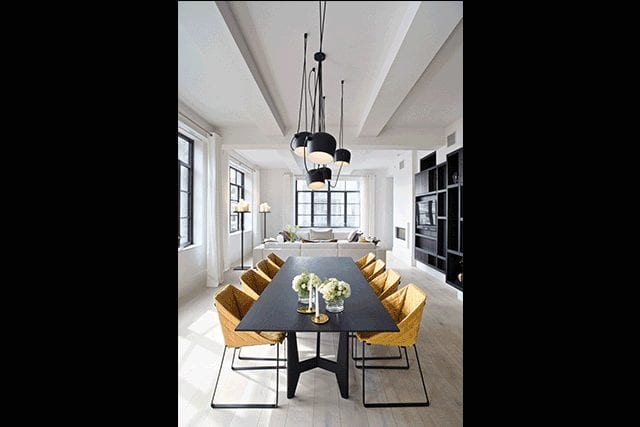
At Huys New York, high ceilings and floor-to-ceiling windows combine with minimalist materials to make the condos feel inviting and spacious.
Your spaces generally include green spaces and natural light, why is that important to you?
We like to connect the interior with the exterior and vice versa, as we think of the exterior as the extended version of an interior. When it comes to natural light and building on the interior-exterior connection, it is not only a very pleasant way of incorporating light in an interior, it also optically enlarges a space.
When designing for hospitality, what do you focus on?
For us, it is hugely important to seamlessly blend our client’s identity with our design values. This allows us to create the ultimate design experience and exceed the expectations of our clients. We always read between the lines and invest in getting to know them. We also put a lot of effort in pushing our creative boundaries to create something timeless that our client couldn’t have dreamed of. It requires us to be ahead of the curve all the time.

